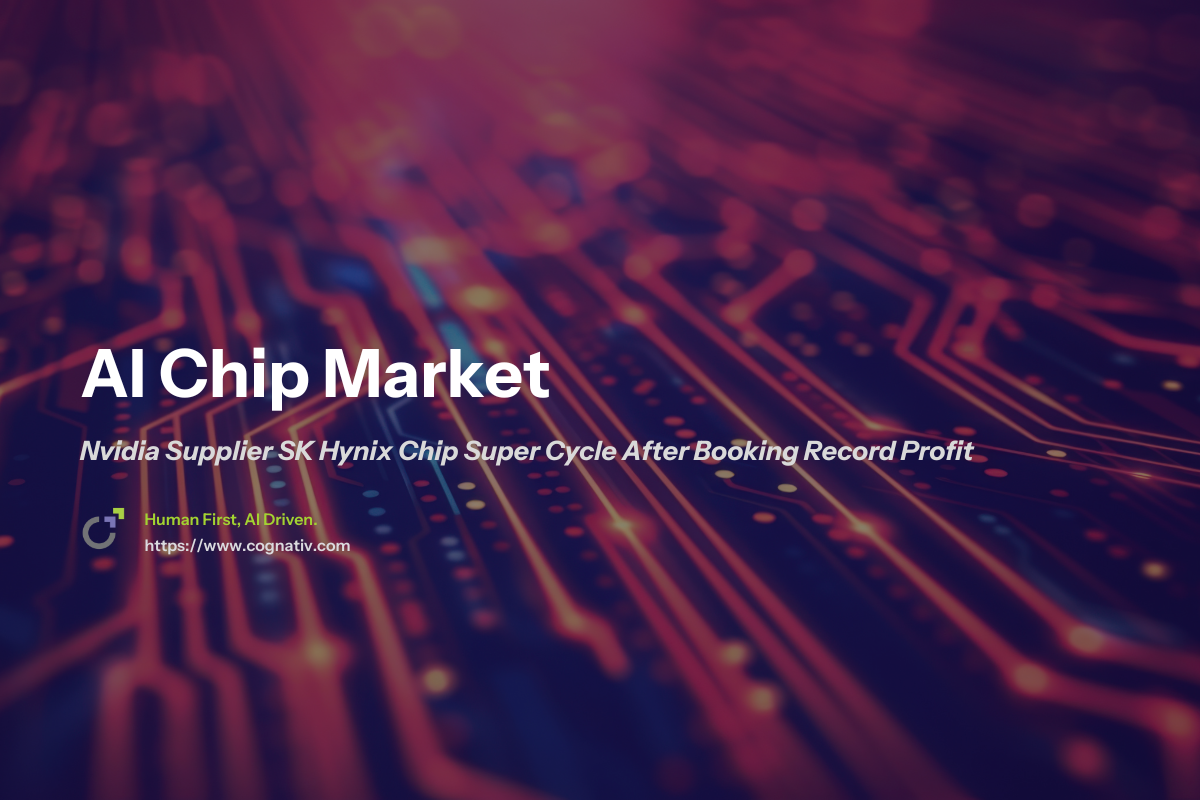Nvidia Supplier SK Hynix Bets on Extended Chip Super Cycle After Booking Record Profit
South Korea’s SK Hynix, a key Nvidia supplier, has announced a historic milestone by selling out its entire chip production for 2026 amid soaring demand driven by the AI boom. The company’s remarkable financial performance and strategic investment plans underscore its leadership in the global memory chip market, particularly in advanced AI chips and high bandwidth memory (HBM).

Market Dynamics Fueling an Extended Chip Super Cycle
The rapid expansion of AI infrastructure worldwide has triggered a prolonged chip super cycle, with SK Hynix at its forefront. As AI data centre infrastructure investments accelerate, customers are vying to secure memory chips, pushing demand growth far beyond supply capabilities. Kim Kyu-hyun, SK Hynix’s head of DRAM marketing, highlighted this structural constraint on DRAM supply, noting, “Supply growth lags amid accelerating demand, and total output will inevitably remain limited.” This supply-demand imbalance is a key driver supporting the current super cycle, with DRAM inventories dropping to extremely low levels.
The HBM market, a critical segment for AI applications, is forecasted to grow over 30% annually over the next five years, fueled by expanding investments from global AI companies. SK Hynix, recognized as a leading chip maker in this space, has secured full customer demand for its entire DRAM, HBM, and NAND production for next year, underscoring its dominant position in the market.

Production Innovations and Strategic Partnerships
SK Hynix is set to strengthen its AI memory leadership by launching next-generation HBM4 chips in the fourth quarter of this year. These advanced chips are designed to meet the rigorous demands of AI data centres and high-performance computing. The company’s strategic letter of intent with OpenAI for HBM supply reflects strong AI-driven demand and its commitment to supporting cutting-edge AI infrastructure.
Despite the strained output of conventional memory due to a shift toward HBM production, SK Hynix continues to focus on delivering newly produced chips rapidly to customers immediately to meet their urgent needs. This approach ensures that key customers, including Nvidia and Google, receive uninterrupted supply, reinforcing SK Hynix’s reputation as a reliable supplier.

Financial Milestones and Market Leadership
SK Hynix reported a record quarterly operating profit of 11.4 trillion won ($8.02 billion) for the July-September period, marking a 62% increase year-over-year. Quarterly revenue surged 39% to 24.4 trillion won, driven by robust sales of high-value memory products. Following the announcement, SK Hynix shares rose as much as 6%, outperforming Samsung’s shares and the KOSPI benchmark index.
This record quarterly profit and revenue growth reflect SK Hynix’s strong market position and operational excellence. The company’s shares have surged over 200% this year, significantly outpacing competitors such as Samsung Electronics, whose shares rose by 87%. Analysts attribute this outperformance to SK Hynix’s technological edge in advanced chips and its ability to capitalize on the AI market’s rapid growth.

Expansion Plans to Sustain Growth
To meet the surging demand for memory chips, SK Hynix plans to sharply boost its capital expenditure and investment spending in 2026. Although the company has not disclosed specific figures, it emphasized that its own spending will grow substantially from this year’s level. This investment will focus on expanding production capacity for advanced AI chips and high bandwidth memory products, ensuring SK Hynix can sustain its market share and support the growing AI infrastructure ecosystem.
The company also plans a full-scale sales expansion of HBM4 chips and other memory products, targeting the increasing requirements of AI data centres and enterprise SSD markets. This strategy aligns with the broader industry trend where global AI companies are ramping up investment spending—including in AI development services—driving rapid growth in demand across multiple memory product categories.

Industry Impact and Competitive Landscape
SK Hynix’s dominant role as a supplier to Nvidia, a leader in AI chip design, positions it uniquely in the memory chip market. The company’s leadership in HBM technology, with a significant share of the market, sets it apart from competitors like Samsung Electronics and Micron. While these rivals are investing to catch up, SK Hynix’s early lead and technological capabilities provide a competitive moat.
The memory industry faces a structural constraint where supply growth is limited by production shifts and capacity challenges. SK Hynix’s ability to navigate these constraints while maintaining strong relationships with key customers ensures it remains a critical player in the AI-driven chip super cycle.
SK Hynix Key Financial Highlights (July-September Period)
|
Metric |
Value |
Year-over-Year Change |
|---|---|---|
|
Operating Profit |
11.4 trillion won ($8.02 billion) |
+62% |
|
Quarterly Revenue |
24.4 trillion won |
+39% |
|
SK Hynix Shares Increase |
+6% (post-earnings) |
+200% YTD |
Quotes from Industry Experts and Executives
Kim Kyu-hyun, SK Hynix’s head of DRAM marketing, stated, “DRAM inventories have dropped to extremely low levels, and for DDR5 products, newly produced chips must be shipped to customers immediately to meet demand. This structural constraint on DRAM supply is expected to support the current prolonged memory super cycle.”
Jamie Freed, a semiconductor industry analyst, commented, “SK Hynix’s record profit and strategic positioning as Nvidia’s key supplier underscore the company’s pivotal role in the AI memory market. Their investment plans signal confidence in sustained demand growth driven by AI infrastructure expansion.”

Conclusion
SK Hynix’s record quarterly profit, sold-out chip production for 2026, and aggressive investment plans highlight its leadership in the accelerating AI-driven chip super cycle. The company’s focus on advanced AI chips, high bandwidth memory, and strategic partnerships with industry leaders like Nvidia and OpenAI position it to capitalize on the rapid growth of AI infrastructure globally. As supply growth lags behind accelerating demand, SK Hynix’s ability to navigate these challenges and expand production capacity will be critical to sustaining its market dominance and driving future growth in the memory chip industry.

